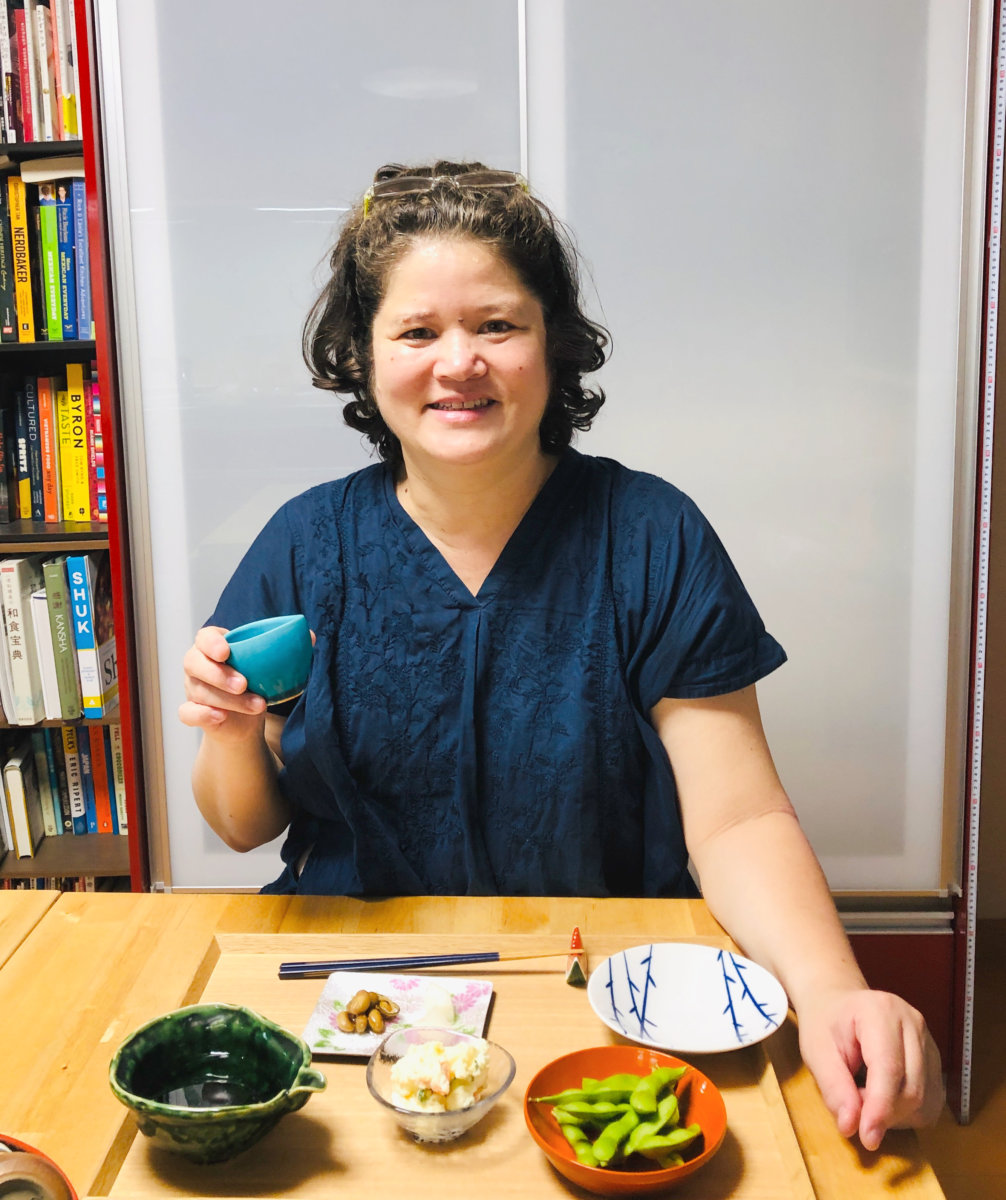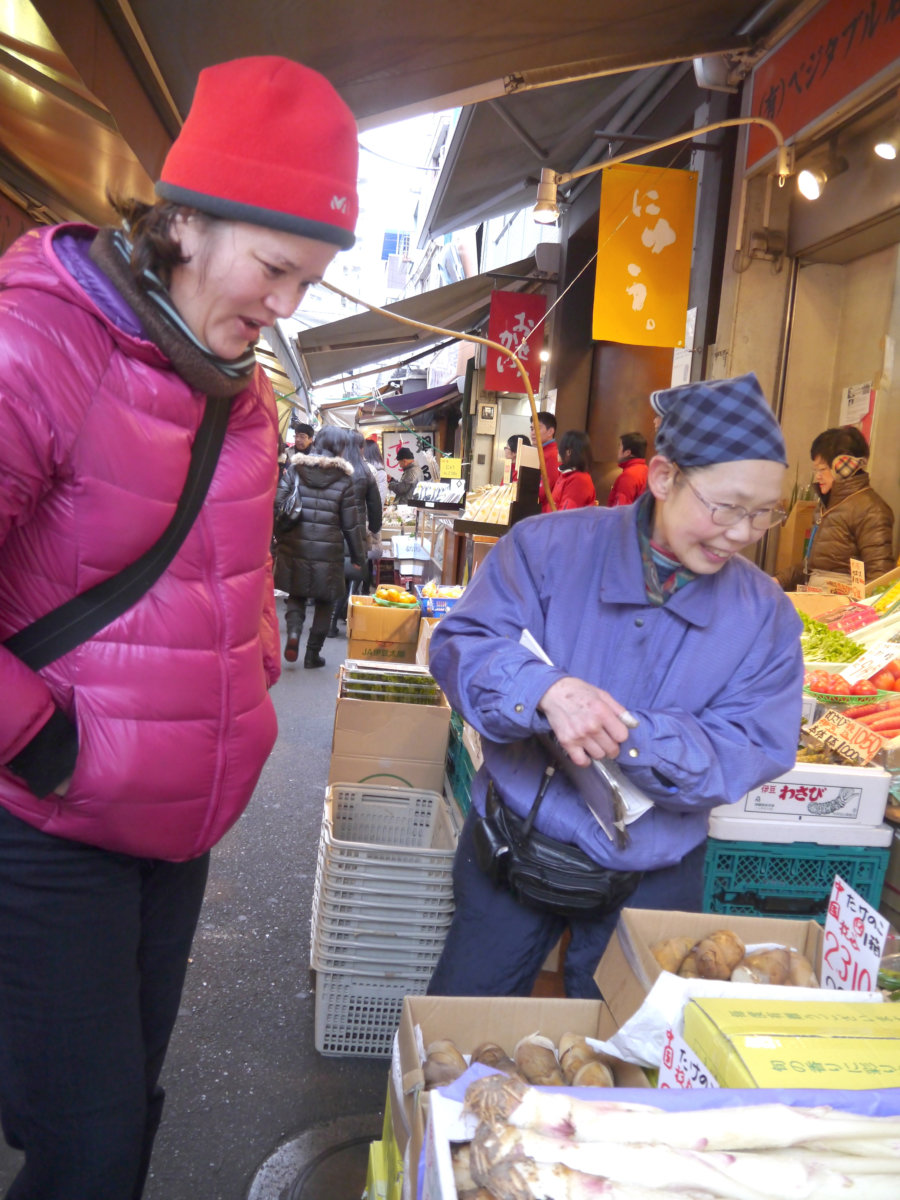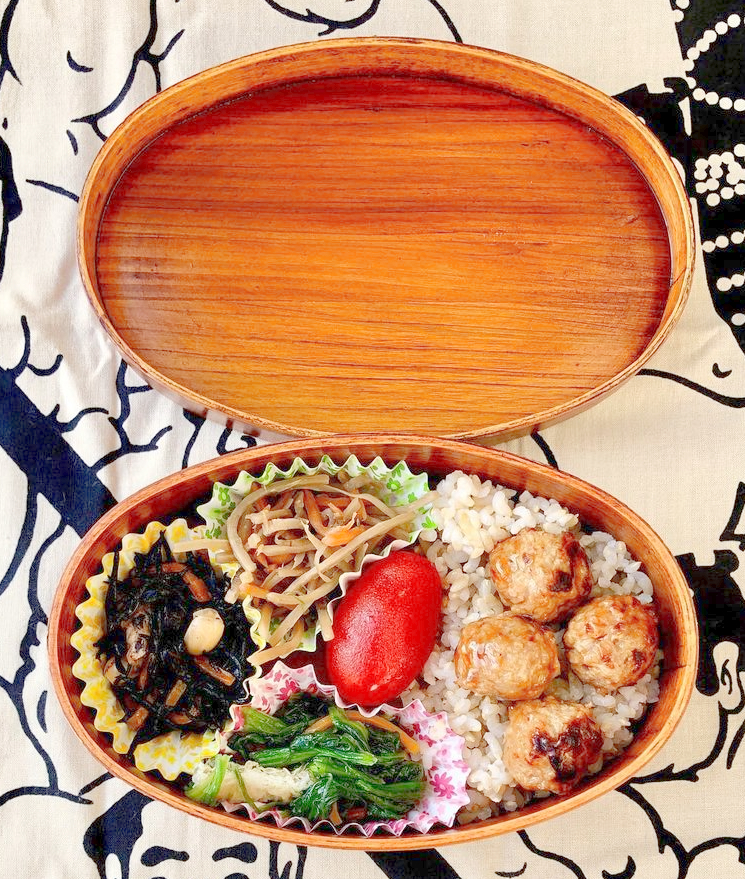James Beard Award winner, Nancy Singleton Hachisu is an expert of unique and authentic Japanese cuisine. Born and raised in California, she first went to Japan over 32-years ago where she now lives on a farm with her Japanese husband and their family.
Yukari Sakamoto: The Secrets of Japanese Home Cooking
Author of Food, Sake, Tokyo, an exploration of Tokyo’s food scene, Yukari Sakamoto is on a mission to demystify Japanese cuisine. Trained at the French Culinary Institute and the American Sommelier Association, she also passed the rigorous exam to become a certified shochu adviser. She teaches classes on food, wine, and shochu, and conducts culinary tours of Tokyo’s shops and markets. Born in Tokyo and raised in Minnesota, Yukari brings insights from both cultures to shed light on Japanese cuisine.

Aiste: What is the secret of Japanese cuisine?
Yukari: I think one of the secrets is fermented foods. In Japan, we have mould called koji and it’s used to make all our pantry ingredients: sake, soy sauce, mirin (sweet sake), vinegar amazake, miso, etc. Everything that we use in our Japanese pantry is fermented using this mould. And so we make dashi which is rich in umami, it also uses fermented katsuobushi (bonito flakes). Without fermented foods, the Japanese pantry and most of the cuisine that people know, would not exist. So I think that is the secret, hidden ingredient, or secret technique.
Aiste: Dashi is the essence of Japanese cuisine. Can you tell us about it?
Yukari: Dashi is very diverse and depends on the region. It can be with or without fish, even vegetarians can make dashi using kombu, a kelp that provides natural umami, they can use dried gourds, soybeans, dried shiitake mushrooms. So you have vegetarian dashi, but I think most people around the world are familiar with Ichiban dashi or dashi made from kombu kelp, a seaweed and katsuobushi, bonito, which is smoked and dried and then shaved into thin flakes. But in other parts of Japan, in Shikoku for example, they use umeboshi which are small pickled Japanese plums, and in Kyushu, they use a flying fish – tobiko. Depending on where you grow up in Japan, the flavour of your dashi will change.
Dashi will change from region to region. Also as water changes from soft to harder, this affects the taste of dashi
Aiste: Would you say some dashi flavours are stronger, some muted?
Yukari: Yes, and it’s interesting, the kombu, the kelp used as a few major styles. In Kyoto they use a lighter flavour that gives a clear broth. But in Tokyo, you get stronger kombu which gives stronger flavours. So dashi will change from region to region. Also as water changes from soft to harder, this affects the taste of dashi.
Aiste: For a Japanese-cooking beginner who wants to make dashi at home, what’s the secret?
Yukari: For a beginner, there is a thing called a “dashi pack”, it’s like a teabag. It’s all-natural and inside there is dried kombu, kelp and katsu bushi, bonito flakes. You can keep it in a pot like tea. Dashi needs to stay quite fresh, you can keep it in a refrigerator for two days, but you can also keep it in a freezer for up to 3 months if you make really good quality dashi. But most of the time we make it each day as we use it.
Aiste: We know Japanese cuisine from restaurants, tell us the secret to Japanese home cooking?
Yukari: Dishes are much simpler at home. Another secret is that supermarkets are very close in Japan and have a lot of prepared foods. It’s very easy to buy tempura that is ready to cook at home with soba or rice. I buy tonkatsu, a pork cutlet that is breaded and fried, so I can make dishes at home, but that is kind of cheating.
For easy meals, you can make a lot of food at home, udon or soba, which you just dip in broth. The broth: I don’t make it from scratch. I buy very good quality ones, in a bottle from a supermarket, and just dilute that with water at home. If you know your way around Japanese supermarkets, it’s easy to cook Japanese at home.
Aiste: I noticed this when I went to a supermarket in Japan, the food there is very good…
Yukari: …. And affordable, not too expensive.

Aiste: I read somewhere that there are over 55 thousand konbini—convenience stores around Japan. And they really take over Japanese kitchens, because people don’t have time to cook.
Yukari: The quality of food you get is amazing. Everyone knows 7-Elevens, but we also have Familymart and Lawson. These big chains compete against each other for business. Every year when I come back from the States to visit my family, we stop at 7-Eleven on the way from the station to our house to buy good quality miso soup, I just add a bit of water, I also buy onigiri—filled rice balls, as well as buy Nattō, eggs, milk, pickles and we are set for our first dinner and breakfast. And it’s not even overpriced, it’s convenient and good value.
Aiste: Would you say Japanese people generally cook at home or consume ready-made food from stores?
We always have pickles in the fridge, which round up almost all meals.
Yukari: They do, at the moment they are forced to cook at home because of the pandemic. It’s good for me, because I like cooking, but for those who don’t like, they go to a convenience store for prepared food.
Aiste: What are Japanese staple ingredients that you must have in the kitchen?
Yukari: We always have pickles in the fridge, which round up almost all meals, we also have miso for soup, and for simmering fish, we always have dried noodles in the house, we have tsuyu (a dipping sauce), we always have a variety of vegetables that change according to the season.
Aiste: What are the vegetables?
Yukari: Right now we are loaded with lotus roots, kombucha squash. Edamame just finished the season, but we ate a lot of edamame throughout the summer. And now we are going into early winter, for fruit, we have mikan (little mandarins), nashi pears and grapes. It’s quite expensive, not cheap, but when it’s so good, you don’t need a lot of it.
Variety of fish is changing with global warming: right now we usually eat the Pacific saury, but because of climate change, the catch is very low compared to what we usually have. This is because the fish are going up north, where it’s not so warm.
Aiste: How about fish? I remember you were doing lists of seasonal fish every season.
Yukari: Yes, it’s still online on my website. It’s changing with global warming: right now we usually eat the Pacific saury—the long skinny fish with the bright yellow peak at the end when it’s fresh—but because of climate change, the catch is very low compared to what we usually have. This is because the fish are going up north, where it’s not so warm. Before we were having it once per week, but now we splurge only once a month because the price is 3 or 4 times higher than we’re used to.
Aiste: How did everything change since Tsukiji (the fish wholesale market) moved to Toyosu?
Yukari: It’s hard because the location of Toyosu is difficult to access using regular transport, and in your own car the parking is too expensive. My friends who have restaurants stopped going, and they get fish directly from fishermen from different parts of Japan who ship for them twice a week. Tsukiji became very different, it became a tourist area and before coronavirus started it was filled with tourists visiting the market.

Aiste: So what’s cooking in your kitchen?
Yukari: It’s funny when we go back to the US every summer, my son is surprised that they still eat cereal every day for breakfast. In Japan, if we have curry from the night before, we will have curry for breakfast. I personally prefer bread for breakfast, we have amazing bakeries here. My son loves rice, so 6-7 day a week we have rice, miso soup and then I pick a protein, fish or chicken or leftovers from the night before. When my son is in a rush he likes Tamago Kake Gohan, which is raw egg on rice with soy sauce. But I don’t like it.
Lunch is a quicker meal, maybe some noodles, or something from a supermarket to get a quick meal. For dinner we change from rice to noodles, seafood, pork or chicken, we have a lot of options for protein sources.
Aiste: And desserts are not so big in Japan.
Yukari: Not really. For breakfast, we will have a piece of fruit and some yogurt. Fermented fruits are a big thing in our diet, and since the coronavirus hit, lot’s of television programmes remind us what you have to eat for your immune system, and fermented foods are very important. Also to drink amazake which is fermented rice koji, it’s naturally sweet and good for your immune system.
For dessert we have fruit with red bean paste in it. But we don’t eat a lot of buttery sweets, we don’t do cakes or brownies or cookies. Japanese love French patisseries, they are not too sweet, usually, the sugar is cut down.
Aiste: What is your favourite dish to cook at home if you have time to cook?
Learn more about ingredients that you can find in a supermarket.
Yukari: Right now, when it’s getting colder, we do a lot of nabe (Japanese hot pot), on a tabletop we put a small portable grill and a big pot. Chickennabe (mizutaki) is very easy: soak bite-size chicken, carrots, onions, leeks, lots of different mushrooms, cabbage, then just put a lid on, cook a bit until all the ingredients are soft and when you pull all the ingredients out and dip in ponzu sauce. We do a lot of nabe hot pots this time of the year. We also love gyoza, so for these it takes a little bit more time to make fillings, to wrap them and to fry, but if we have time, we will do it.
Aiste: What would be your advice for those who want to learn Japanese cooking?
A tip for cooking at home – Japanese try to include 5 colours with every meal: red, white, yellow, green and black.
Yukari: Learn more about ingredients that you can find in a supermarket, for example tsuyu, which is a dipping sauce that we use for soba or udon, but can also be used for stir-frying vegetables, and if you want to make a nice chicken dish, put chicken in a rice cooker add vegetables like mushrooms and carrots, add a little bit tsuyu into the water and you will have a seasoned rice dish.
Also, get some good cookbooks, Elizabeth Andoh’s “Washoku” and “Kansha” are very informative, also cookbooks and recipes by Shizuo Tsuji have a lot of basic recipes, Naoko Moore and Kyle Connaughton’s “Donabe”, Sonoko Sakai’s “Japanese Home Cooking”. Invest into really good cookbooks if you want to cook at home.

Another tip for cooking at home, we try to include 5 colours with every meal: red, white, yellow, green and black. Rice is usually white, green- beans or broccoli, orange – carrot, black can be eggplants. So when you are preparing the meal and going shopping, shop for colours. Look at the bento box, it should have 5 colours in it also. That’s another secret for cooking at home.
